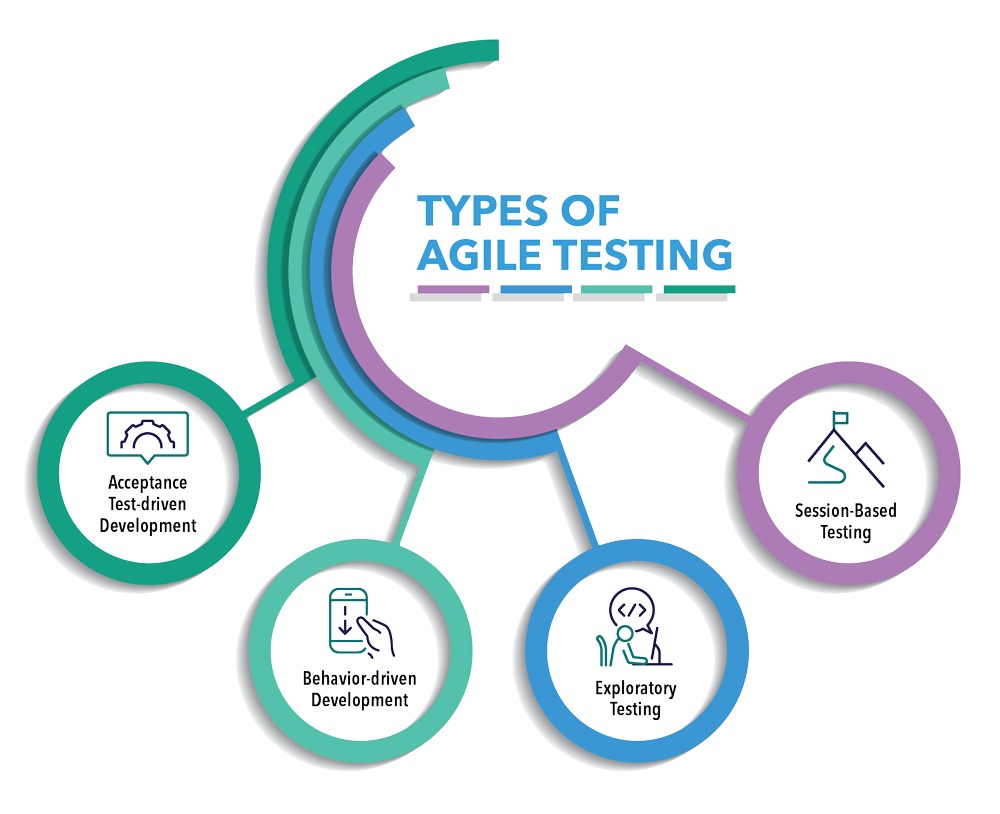Software development has come a long way. With traditional development methods proving to be tedious and time-consuming, Agile has taken the fast-paced world by storm, becoming a key element in the development of an application.
What is Agile Testing?
Agile is a concept encompassing new values. As its name suggests, it’s essentially a speedy method to work on software development. It highlights the impact of continuous integration where every team member’s work impacts the outcome.
Why do we prefer Agile?
- The traditional waterfall model for software development was workable. It worked sequentially, with tasks being split over a longer period. However, this posed the obvious drawback of not extracting the most out of resources available.
- Agile sought to change this wasteful process. It commences output creation from day one. Upon making requirements and goals clear, work starts almost immediately. As a goal-oriented approach, Agile strategically tackles any bugs or errors in the earliest stages possible, revoking the need to re-work any aspect.
- It earnestly promotes collaborative work between customers, developers, and the testing team. The final output will hence be a well-rounded product.
Why is it relevant today?
As mentioned earlier, Agile saves time and resources. This methodology helps product designers keep up with present-day competition. Its continuous pace makes refined solutions and helps maintain efficiency. Additionally, because everyone is kept in the loop, the quality of the product is better.
Agile testers keep up with this pace by embodying the following values:
- Provide continuous feedback and critique
- Deliver value to the customer
- Make room for easier communication
- Stay courageous
- Keep it simple
- Strive to upgrade
- Respond to change
- Self-organize
- Focus on people
- Enjoy the process and results!
The collaborative nature of these principles makes the final output valuable, both business-wise and work-wise.
The industry relies on these types of Agile Testing for best results:
- Acceptance test-driven development: After a prerequisite formal description of the behavior of a software product, collaborative discussions from customers, developers, and testers together answer the “whats” and “hows” of the process to follow.
- Behavior-driven development: a methodology in which the focus of an application is the end-user, and the procedure is documented and designed around them.
- Exploratory Testing: this method focuses on discovery. It depends on the prowess of the individual tester to find defects that are not easily uncovered in the scope of other tests.
- Session-Based Testing: these are timed/continuous testing sessions focused on a particular goal.
Based on the software needs, the right methodology can be chosen. These can still be further enhanced by following certain practices:
- Code Austerity Needs to Be Maintained: To execute the Agile case, the implemented code must have sufficient attributes. This will, in turn, make reviewing and testing shorter and simpler.
- Repetitive Testing is a must: This procedure is crucial to ensure code strength amidst intense testing. Any newly- added codes should still meet set standards.
- In-Person Communication with Developers: Communication is the key. Agile testers will best be able to convey errors and bugs to developers when in touch, and it makes the whole process easier.
- Goal-Oriented Work Approach: As a fundamental element of Agile testing, setting specifications with a clear idea of what the final product should look like is mandatory.
- Focus on One Functionality at a Time: One must follow a step-by-step approach while developing multiple features. Start with one and work from there.
Building a robust Agile Testing strategy for businesses can be relatively simple.
- Combine with Test Automation strategy: A solid test automation plan keeps the pace consistent while maintaining quality in the final product.
- Open channels of communication: Since short and continuous testing is in the works, regular meetings and other modes of constant communication will ensure project deadlines are met per the defined schedule.
- Leverage the team’s earlier testing experiences: In a team, people with similar experiences are likely to collaborate easier. It will establish the need for training if necessary and boost productivity.
- Adopting a proactive approach towards Testing and Quality Assurance: A proactive approach allows room for improvement and analysis. We can best evaluate the market-ready nature of any application with this outlook.
- Nurture skills beyond Testing and Development: Well-established interpersonal relationships in any team allows smooth sailing of work. Good communication skills should be emphasized as needed.
Tips to get started right:
- Have a clear idea about what tools their testing would require (Jira, Rally, VersionOne, etc.)
- There must be no inter-dependencies whatsoever in order to reduce complications.
- The scope of the product must be crystal clear.
- The risks before, during, and after testing must be known and must be managed well and developers must be informed of cases where mitigation might be necessary.
- The parameters of the success of testing must be recognized before the testing itself including a final production time estimate.
- Include the post-production plan (which usually involves monitoring).
- Development and testing are done simultaneously, making the Agile process time and resource-efficient.
- The collaborative effort creates a high-quality product.
- Delivery is quicker and more effective.
Connect with Prakat.
![]()
Modernize and transform how you do business in the digital age. The Prakat team is ready to help you get started.








